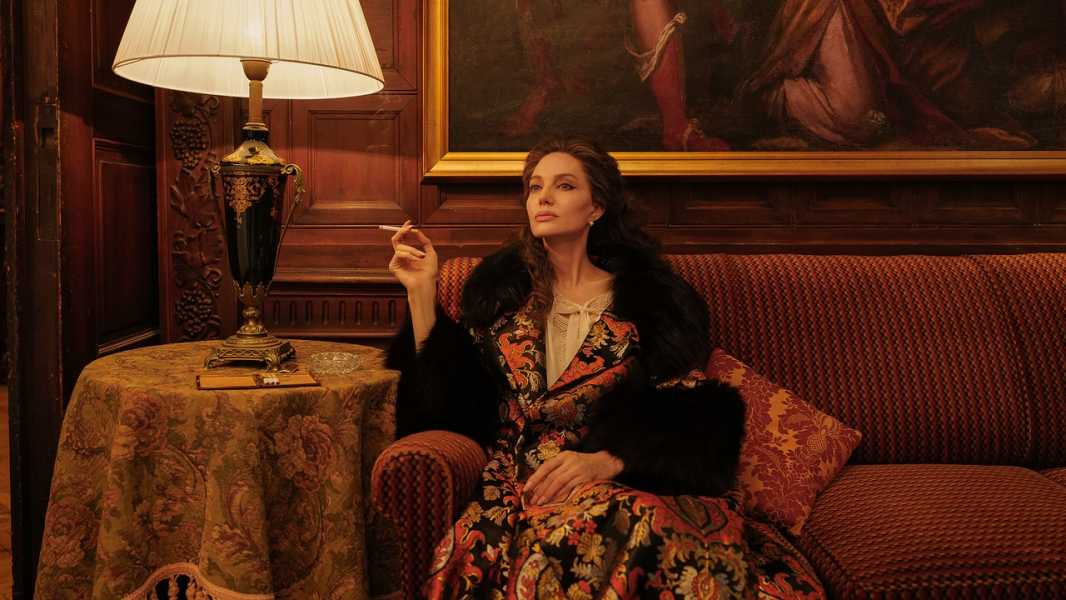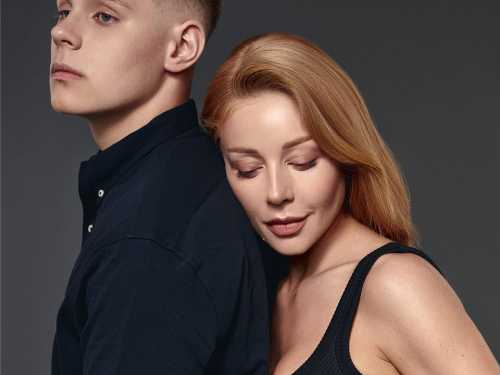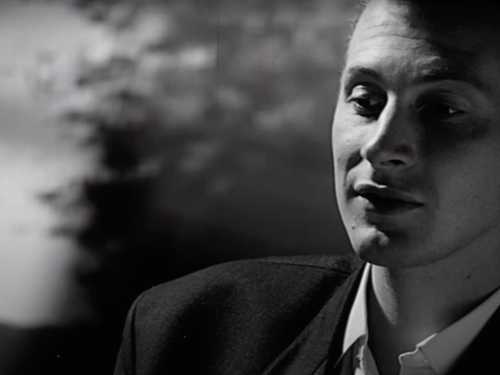
Save this storySave this storySave this storySave this story
Pablo Larraín’s new film “Maria,” the third in his trilogy of grandes-dames bio-pics (following “Jackie” and “Spencer”), is the best of the three for a simple reason: its protagonist, Maria Callas, faces the most suspenseful conflict, the attempt to restart her singing career after a long absence from the stage. The other two films are mainly private stories that are centered on celebrities whose private lives contrast with their public identities. In “Spencer,” Princess Diana (Kristen Stewart) struggles against the controlling ways of the Royal Family and her princely husband; in “Jackie,” Jacqueline Kennedy (Natalie Portman) tries to maintain her privacy amid the public grief at her husband’s death. But, mere celebrity aside, Jackie Kennedy’s place in history shrank after she left the White House, and the British monarchy has been of little historical significance since the Second World War. By contrast, the drama of “Maria” (written by Steven Knight) involves Maria Callas (played by Angelina Jolie), one of the great musicians of her time, struggling with an art that has an independent existence and an independent place in history.
Callas, whose singing career had, in its main substance, ended in 1965 (the year of her last staged operatic performance), remained—for better or worse—a singer to the end. The movie is energized by the emotional implications of the gap between her unflagging devotion to music and, essentially, music’s abandonment of her—the loss of many of the best qualities of her voice. “Maria,” which starts with Callas’s death, is anchored in the last week of her life, in September, 1977. Maria (the character) lives in a lavish apartment in Paris, with a staff of two. Her so-called butler, Ferruccio (Pierfrancesco Favino), is more like a factotum—a chauffeur, a personal shopper, a bodyguard, a secretary, even an aide-de-camp on whom she relies for counsel until, when she doesn’t like his advice, she cruelly puts him in what she considers his place. Her chef and housekeeper, Bruna (Alba Rohrwacher), is timid and worshipful but able to take quietly decisive action when necessary.
And it’s quickly necessary, because Maria is abusing the prescription drug Mandrax (essentially Quaaludes plus an antihistamine) and is, as a result, tormented by nightmares and hallucinations. Ferruccio arranges for a doctor (Vincent Macaigne, an inspired comedic actor stuck in a merely functional role) to make a house call. The doctor orders her off the medication; instead, Maria hides pills in the pockets of clothing in her wardrobe, and it’s up to her staff to find them and dispose of them. Despite her infirmities, Maria pursues an ambitious plan: she arranges a meeting, in an empty concert hall, with a rehearsal pianist named Ronald (Paul Spera), who quickly becomes far more than an accompanist. Endowed with ample talent, refined taste, and a deep devotion to opera—and to her—he quickly takes on the role of her musical conscience, a coach and a confidant.
The voice is decidedly not what it was; this is already apparent earlier in the film, when Maria sings to Bruna in the kitchen, while the chef is flipping an omelette and dishing out empty calories of praise. When she sings (“O mio babbino caro,” from Puccini’s “Gianni Schicchi”) for Ronald, he both speaks the truth and sees beyond the trouble at hand to the possibilities that, with work, lie open to her. She can’t help talking about her long-lost love, Aristotle Onassis (who left her to marry Jackie Kennedy, and who died in 1975), and her confession gives Ronald an opening for what turns out to be the best riff in the movie, telling her not to sing but to shout—so that Puccini and the dead Onassis can hear her. And she does, and there are flashes of greatness in her fury, but she can’t get through the aria and he parses her problem into two parts—one, that he’s hearing Maria and wants to hear La Callas; two, that to get where she wants to go, it will take lots of work.
It's worth dwelling on Maria’s scenes of work with Ronald because the drama of an artist repairing her art in order to repair her life is the most powerful element that Larraín has to work with. When he does work with it, he brings history and art into intimate confrontations that produce enormous force. That has always been where Larraín is at his best, as in a pair of movies that he made in his native Chile: “No,” a process-oriented story about the making of an ad campaign that helped to bring down the dictator Augusto Pinochet; and “The Club,” in which a retreat for disgraced Catholic priests gives rise to remarkable confrontations with a Church official.
Instead, “Maria” gets lost in a tangle of clichéd bio-pic narrative stuffing, and runs superficially through the protagonist’s reminiscences by way of an embarrassing contrivance. Early on, Ferruccio reminds Maria of a TV interview, and when she meets the young interviewer (Kodi Smit-McPhee), he’s identified by the unfortunate name of Mandrax—in other words, a figment of her drug-addled imagination. He accompanies her through much of the movie and gives rise to many of the anecdotes that Larraín depicts in elaborate flashbacks, mostly in black-and-white. (The most startling, set during Maria’s adolescence in Nazi-occupied Athens, shows her being pimped out by her mother to S.S. officers.) As for Maria’s struggles in her last week, their drama is marred by silly and garish fantasies that include a crowd outside the Palais de Chaillot spontaneously turning into a male chorus singing the Anvil Chorus from “Il Trovatore.”
Above all, Larraín, as if irresistibly drawn to celebrity—which is to say, channelling what’s least substantial in the two previous films in the trilogy—centers those reminiscences on Maria’s relationship with Onassis (played by Haluk Bilginer). Onassis introduces himself to her boldly, the movie shows, in 1959, by hosting a sumptuous party in her honor at a time when both of them are married to other people. He does more than proposition Maria that very night—he assures her that she won’t be able to turn down his proposition. In the course of their relationship, Maria is also summoned, by then President John F. Kennedy (Caspar Phillipson), who also propositions her; she has no trouble turning him down, but not before informing him that Onassis is busily trying to seduce Jackie. Yet it’s exemplary of the sensationalizing movie that the aspect of her relationship with the magnate to which she often refers—his efforts to keep her from singing—gets no significant dramatization in the flashback sections. (By contrast, a sentimental reconciliation at his deathbed is drawn out at ardent, insignificant length.) The omission is just a small part of the movie’s far greater omission: what made Maria into La Callas, the story of the singer’s art.
Of course, the reminiscences that Maria yields to are filled with moments of past glory on stage, and they’re filmed with great sumptuousness; the cinematography, by Ed Lachman, is itself a kind of visual music. Yet this sumptuousness ultimately takes the place of true visual imagination. When the camera swoops over the orchestra pit and gyrates around Maria onstage, it merely suggests Larraín’s effort to distract viewers from watching a singer sing—or, rather, from his own failure to depict such a moment of artistic creation plainly and clearly. Larraín shows the glory and emphasizes that what she has lost is the very center of her life, the power to perform onstage. What he doesn’t probe at length or in detail is the work, physical and mental, that goes into performance. He emphasizes the adulation over the art, the parties over the exertion, the legend over the reality.
Callas was controversial even in her glory days, and, like many a great artist, she was also misunderstood. Yet “Maria” never makes clear what was distinctive about her. In effect, Callas was the Billie Holiday of opera, with a voice that’s uniquely beautiful for not being exceptionally pretty; it’s a beauty of expression and originality that risks harshness, not by failure but by design, so that the musical sense (which the meticulously trained and passionately studious Callas thoroughly grasped) could be transmuted into drama and the characterizations rendered intensely personal. Hers was an art of danger and of abandon; even if many singers aspire to such expressive freedom, few take the risks that it entails. Early troubles with Callas’s voice, even in the nineteen-fifties, are among the self-evident dramas of her life, but Larraín betrays no interest in this. No matter how ostensibly operatic Maria’s romantic adventures may have been, the adventures of her voice are far greater. That’s why her scenes with the rehearsal pianist Ronald—including one prominently featuring a cassette recorder—point in the direction of the movie that nearly was.
Jolie’s performance makes those scenes all the more powerful. I was surprised to learn that the actress spent about seven months learning the methods of singing opera, and that she indeed does much of her own singing in the film. Her musical scenes are as impressive as they are audacious, and Jolie conveys in them the intense physicality that the craft demands. But Jolie’s singing is secondary to the attitude that she sustains throughout—even more than in some of the interpretive specifics. (At times, she seems, incongruously, to channel Katharine Hepburn through Callas.) Without the movie’s scenes of Maria’s efforts to regain her voice and return to the stage, “Maria” would lack drama. But in nonmusical scenes, even in the most awkwardly or blandly imagined of them, Jolie—a movie star of a distinctive sort, a star of passion—renders her incarnation of Maria persuasively and movingly operatic. ♦
Sourse: newyorker.com






